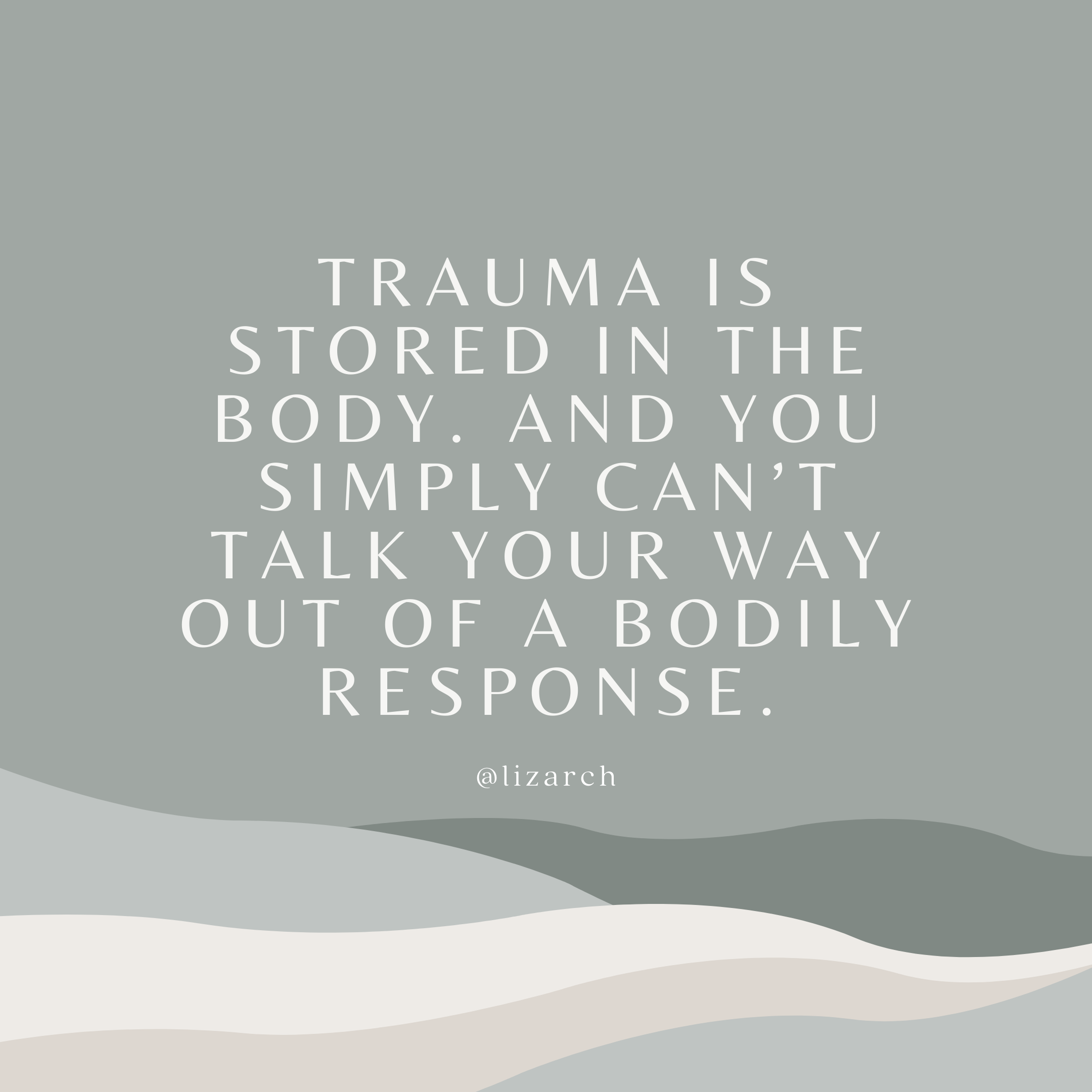Why Talk Therapy Didn't Work For Me

Years ago, when I felt like I was drowning in my own trauma, I sought out talk therapy and at the time, it surprisingly made me feel worse. Looking back, I now know that there was a very practical reason why I didn’t get the results I was hoping for, which had nothing to do with me or my therapist. Instead, it had to do with the nature of trauma itself.
Before I go on, let me preface this by saying that I’m actually a big advocate of therapy and I’m in no way suggesting that you should ditch your therapist or shrug off professional mental health support. Please in fact, DO NOT do that.
I have personally benefitted greatly from certain types of therapy at various points in my life, including Cognitive Behavioral Therapy (a form of psychotherapy) and Hypnotherapy. And while my first experiences with talk therapy weren’t very successful, it’s a tool that I wouldn’t hesitate to recommend to others or reach for myself in the future if I needed additional support.
That being said, despite my wanting and willingness to talk through my trauma, I couldn’t understand why I would leave my therapy sessions feeling worse than when I walked in. I remember sitting in my car after leaving my therapist’s office feeling shaky, dysregulated and emotionally hung-over. I would drive home in a haze and would exist in a heavy fog for the next few days.
I didn’t blame it on the therapist because therapy was supposed to help, right? The problem, I rationalized, must be me. Maybe I was simply beyond help.
What I now understand is that I wasn’t to blame at all (and neither was my therapist). The issue was that I was trying to heal something that was both psychological and physiological by only using a psychological approach.

Trauma is stored in the body. And you simply can’t talk your way out of a bodily response.
As Dr. Pat Ogden, founder and director of the Sensorimotor Psychotherapy Institute says, “talking about [trauma] can stimulate the implicit and the physiological recollections of the trauma, and a person can detach as they are talking about it.”
She continues, “We all know that trauma dysregulates the nervous system; when trauma happens, the physiological arousal is stimulated to arouse the body for defense and protection, and often that arousal doesn’t come back down.”
Essentially, what Dr. Ogden is saying is that trauma first and foremost impacts the body. It makes sense then to address trauma in the body first before trying to solve it cognitively.
We are biologically wired to respond to threat by either fighting, fleeing, freezing, or collapsing. When our body is in one of these survival responses, our higher thinking brain lets go of the wheel and allows the lower and more primitive parts of our brain to do the driving.
Our body responds first. Then our higher thinking brain tries to make meaning out of traumatic events and our bodily responses later. But it’s hard to make unbiased meaning out of our experiences, if our body is still stuck in fight, flight, freeze, or collapse.
In therapy sessions, it can be even harder for trauma survivors to access language to describe what they’re feeling, because their higher brain (neocortex) which controls language, in effect, has been hijacked.
And oftentimes talking about traumatic events can re-trigger the body’s responses, making painful things that have happened in the past feel like an ever-present NOW.
“People often try to work on that with insight – helping a person realize that they are safe now – that the trauma is over. But if your physiology is still hyperaroused, your body is constantly telling you that you are not safe,” shares Dr. Ogden.
What ultimately helped me in my trauma recovery was learning to feel into my body, befriend my nervous system, and use somatic release techniques to unwind patterns of tension, stress, and trauma in addition to therapeutic support like CBT.
Body-oriented approaches to trauma recovery can include various forms of movement therapy (yoga, dance, tai chi and qigong), body sensing, tapping, breathwork, and other specialized interventions such as EMDR, Sensorimotor Psychotherapy, Somatic Experiencing (created by Dr. Peter Levine) and Tension, Stress, and Trauma Releasing Exercises (TRE®) created by Dr. David Berceli.
Fortunately, many psychotherapists (like Dr. Pat Ogden, who is a true pioneer in somatic psychology with her Sensorimotor Approach to Psychotherapy) are now integrating more somatic tools into their therapy practices or working in tandem with body-based approaches with their clients.
If you’ve tried therapy in the past, but didn’t get the results you wanted, working to address trauma’s impact on your body, just may be the missing link.
If you’d like to learn more about how to physically release trauma and create a more resilient and flexible nervous system, join me for Trauma Alchemy, an 8-week group coaching program that will teach you to access your body’s innate healing wisdom, so you can find your way back to safety and connection.
The next cohort starts in the fall. You can join the waitlist here.
While there is no one-size-fits-all approach to healing trauma, there is one fundamental key to trauma recovery: We have to feel in order to heal.


